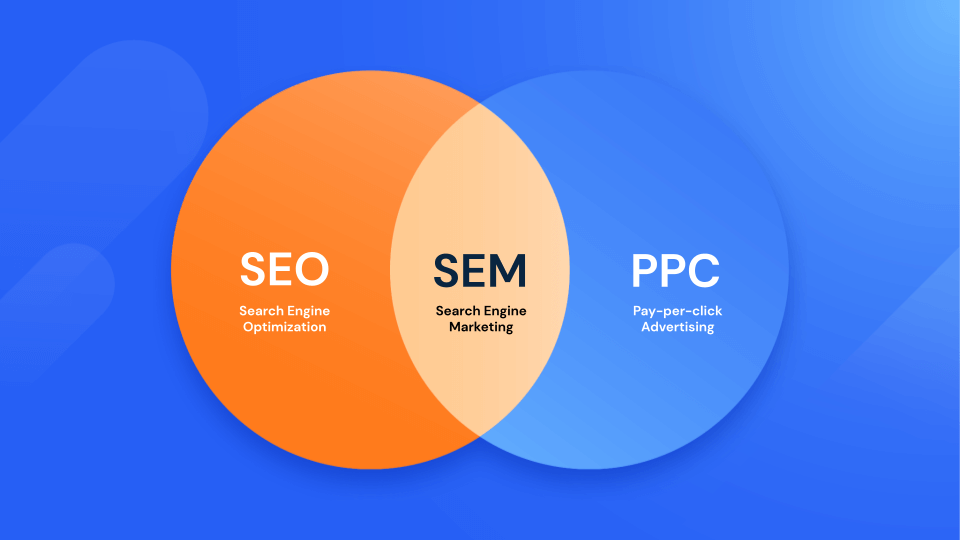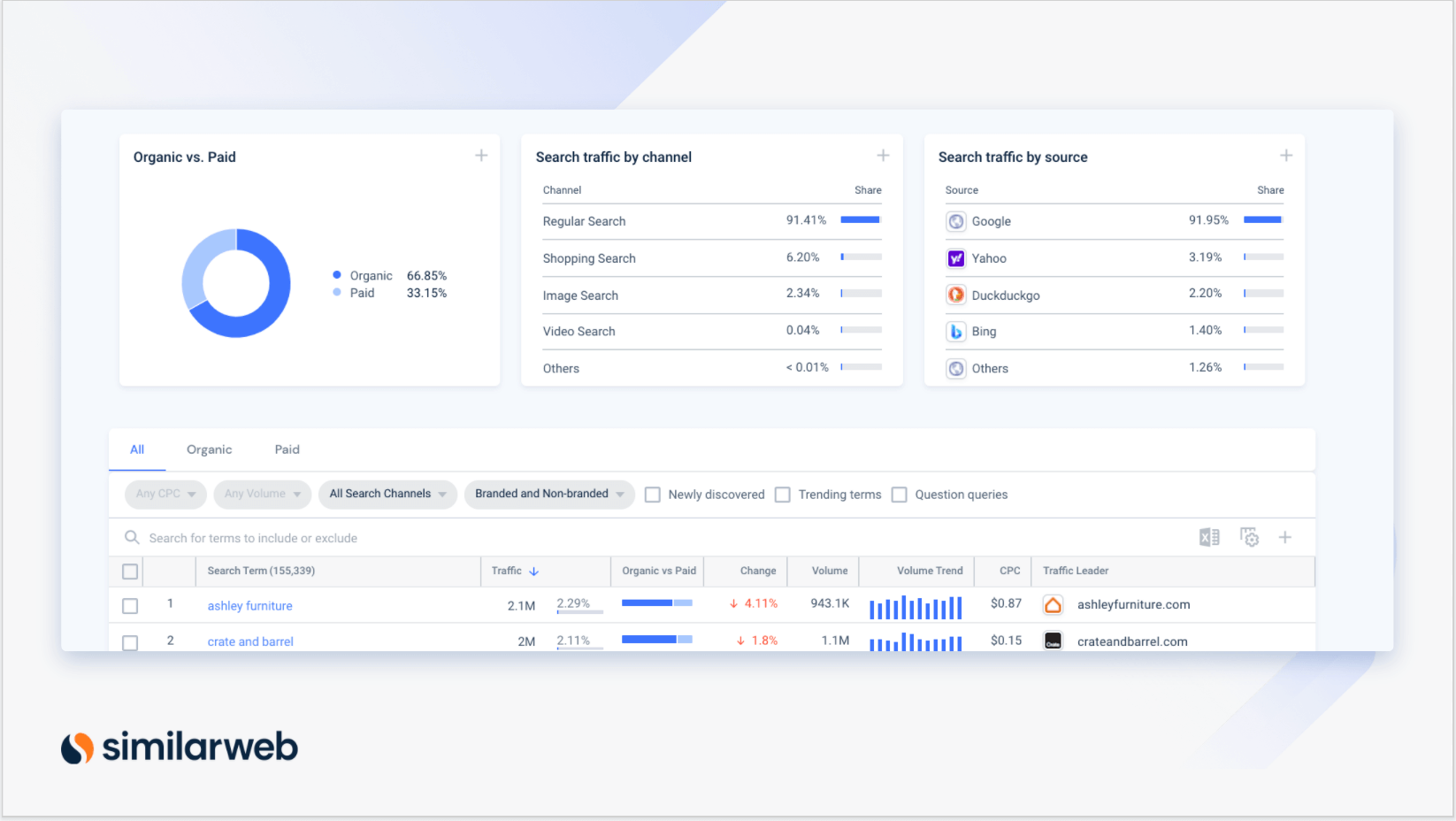PPC Reporting That Shows the Impact of Your Ad Spend

Like all successful relationships in life, a good client-agency relationship is all about communication.
Effective PPC reporting and SEM reporting support ongoing communication and can reveal key opportunities to your clients. Finding the right analytics, agency intelligence, and automation tools can speed up this process and help you improve results over time.
Let’s face it, finding the best way to showcase the results of your marketing efforts can be a challenge. Here we’ll reveal key elements of efficient SEM and key PPC reporting tools that show off the data and other key metrics that matter.
SEM and PPC Reporting: Exceeding expectations
Marketing reports that make an impact demonstrate your progress towards reaching your client’s key performance indicators (KPIs).
Clients expect to see clearly and up-to-date analytics data and PPC data. But beyond that, they’re also looking for interactive visualizations covering their PPC and SEM activities, from social media and ad campaigns to search engines and beyond.
Reports should address questions such as:
- What is the growth rate of your client’s industry, in terms of traffic and revenue?
- What risks are there if your client chooses to expand into a new market or digital channel?
- What is your client’s digital marketing strategy, and how does it compare with their competitors?
- What is your client’s reach across different channels, and how can this be improved?
- What is the return on investment (ROI)?
SEM and PPC reporting that tells a story
At the core, an actionable report presents the most important data from all relevant channels and explains the story behind the metrics. That means matching changes you’ve observed in the metrics to your client’s overall objectives, as well as specific campaign goals.
In PPC and SEM reporting, you’ll track digital marketing metrics like:
- Cost-per-click (CPC)
- Cost-per-conversion,
- Click-through rate (CTR)
- Paid search conversion rate
- Return on investment (ROI) figures
You might also include search rankings, keyword research reporting, or other campaign performance figures. You agreed on particular target metrics before delivering your report, but gathering the data will also present you and your client with an opportunity to reassess the direction of your campaigns.
#PPCreporting and #SEMreporting are all about presenting the right information, at the right time, to give your clients a clear picture of how your work is helping to achieve their paid search goals. Tweet thisAs useful as all that data will be, the best PPC reporting tools provide detailed insights that answer key questions such as:
- What progress has been made toward your client’s KPIs?
- Where are you in the long-term scope of the project?
- What actions would you recommend for the future?
The automation provided by reporting tools frees up your time to analyze the data and optimize your campaigns, giving your clients valuable strategic insights. Those findings can then be presented as visually as possible, with clear imagery and easily-absorbed language.
In short, the best reports feature useful, actionable data and clearly explained insights presented in a compelling visual form.
5 elements of SEM and PPC reports that make an impression
Including every metric under the sun in your report will just lead to confusion.
Reports that impress clients are targeted and precise, like your PPC and SEM strategy itself.
The name of the game here is knowing what elements to include like high-level metrics, key takeaways, competitive market metrics for context, and granular paid search insights.
Here are the five key elements to hone in on:
1. KPIs: Track your progress
Before you get into the meat of the report, it’s crucial to restate the goals you agreed to with your client. That way, you can make sure you’re on the same page before the reader’s head is filled with figures and metrics.
Clearly highlight the goals established, with a measure of how far into the work you are. The next step: present the targeted metrics that relate to those goals.
For example, if you have a PPC campaign to build awareness about your client’s brand, you should report on the change in click-through rates and the number of impressions over time, using paid platforms such as Google Adwords, LinkedIn Ads, and Facebook Ads. You want to include the most accurate and up-to-date data you have, for example from Google Analytics, as well as keyword ranking analysis and reporting on search engine results page (SERP) rankings.
By assessing the campaign’s goals before you dig into the figures, your report will be easy to follow, and changes in each metric will make immediate sense to your client.
Start high-level, giving an overview before honing in on granular details as well. Once you make your PPC report template or SEM report template, it will be simple to have them automatically updated.
2. Historical data: Tell the full story
No man is an island. And data is no different. It’s no use presenting the latest figures in isolation. Context is key for understanding change.
When collecting data for a PPC report, for example, it’s best to include historical data or change for the last week, month, quarter, or even year to show progress.
This reveals seasonal trends or anomalies in the data, and also helps you see the bigger picture. Detail is important, but for strategic thinking, it’s better to be able to zoom out and see things on a macro level.
If you’re pulling a manual report, make sure to capture tracked data in rolling trend-charts so that you can look for patterns and the impact of specific campaigns. Used well, historical data can be incredibly helpful in explaining what’s going on to your client.
3. Live metrics: See updates in real-time
Many clients require more than a one-off snapshot of their metrics. Instead, they’re looking for live dashboards that they can access at any time of the day or night for instant updates. For campaigns with a narrow focus, this might be as simple as running a quick bit of Google Analytics or Google Ads training, but for campaigns with a broader scope, it’s a lot more complicated.
The need to bring together information from across different channels makes building a real-time dashboard complex without an automated tool to help. The best PPC reporting tools can access metrics from across channels and platforms, drawing the data together into customized, interactive dashboards that your clients can browse with ease. Saving you time, and providing them with a premium, tailor-made service.
4. Key takeaways: Spell it out
It’s critical that your PPC and SEM reporting is clear and easy to understand, but it’s also important to remember that reports are a means of building a long-term, loyal relationship. That means that showing off your successes, and explaining any disappointments, are essential components of a well-planned report.
Ultimately, the way you talk about your work and manage your client’s expectations will decide whether they continue to work with you or not.
Part of showcasing your work effectively is about presenting each report in the right way. For an executive report, for example, it’s important to focus on high-level findings, such as the most important metrics and top-performing campaigns. These reports should take only a minute or two to absorb, and feature clear comparisons with historical data.
A report aimed at proving ROI of a particular campaign should focus on no more than three or four goals, detailing how your client’s advertising spend directly contributes to achieving those goals. Google Analytics is likely to be one of your greatest friends for this kind of report.
For a renewal or campaign closure report, you might want to focus particularly on positive results, highlighting the wins in your dashboard. Meanwhile, to highlight new trends or provide progress updates, live client-accessible dashboards are your best bet, with interactive features that allow them to dig deeper into what they are most interested in.
Whatever the purpose of your PPC or SEM report, keep in mind how each engagement helps to develop your relationship with your client.
5. Use graphs and tables: Show, don’t tell
The majority of humans are visual learners (65% to be precise), and so the visual presentation of your data is almost as important as the data itself.
Information is much easier to absorb when presented as graphs, tables, and charts. Displaying your data in this way not only makes it more appealing to read and makes your agency appear more professional, but it also helps you to make deeper insights and provide better guidance and advice to your client.
Additionally, making information easy to absorb demonstrates respect for your client’s time, and reinforces your role, taking care of an important campaign on their behalf. The better the service you can provide, the more likely they are to stand by you when it’s time to renew.
How to level up reporting
Similarweb offers reporting tools that allow you to customize and curate metrics that matter the most to your client. Our comprehensive multi-channel website analytics can be presented in concise dashboards and are populated automatically based on your preferred choices or client needs.
Building just one PPC report is time-consuming. But if you’re working across numerous campaigns, with several different clients, manually creating reports would take even more time.
Similarweb’s tools take care of the hard work, freeing up your time to make the kind of strategic insights and campaign tweaks that your clients are really paying for. Delivering value and results for them, and growing your agency’s reputation and revenue.
Find out more about Similarweb’s analytics for agencies.
Final thoughts
Ultimately, reporting is about clear and engaging communication that shares your progress with your clients. Pulling the right data across multiple digital channels and platforms into one easy-to-understand report is key, and dashboards and PPC or SEM reporting tools can take much of the strain by automating the most time-consuming elements.
So next time you put together a PPC or SEM report, make sure it’s showcasing your agency as effectively as possible.
Further reading: Build Competitive Analysis Reports Your Management Can Rely On
The #1 PPC tool - get started
Give it a try or talk to our marketing team — don’t worry, it’s free!















